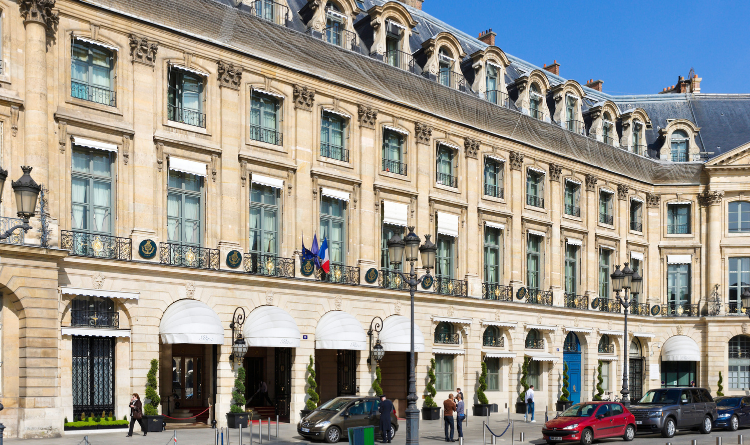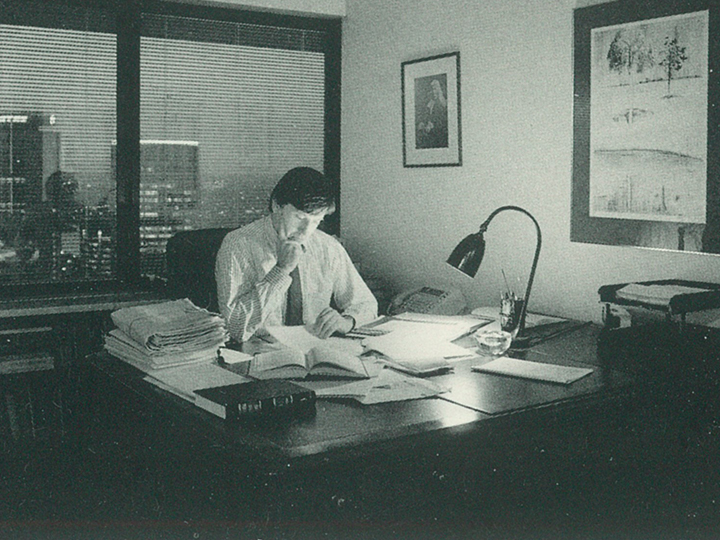Australia's biggest trademark dispute in the last 50 years.
In 1891, César Ritz (the son of a Swiss goatherd) and French chef Auguste Escoffier opened the now-iconic Ritz Paris hotel. According to Ritz, the hotel offered 'all the refinement that a prince could desire in his own home'. It quickly became renowned for its extravagance, first-class service and cuisine, and was one of the first hotels in Europe to offer electricity, telephones and ensuite bathrooms.

The Ritz Hotel, Place Vendome, Paris, France. Photograph by Ian Dagnall via Alamy.
The Ritz was one of the first hotels in Europe to offer electricity, telephones and ensuite bathrooms.
César was succeeded by his son Charles Ritz, but when Charles died in 1976 the hotel fell into disrepair. It was acquired three years later for US$30 million by Egyptian businessman Mohamed Al-Fayed, who spent US$250 million on a complete renovation. Al-Fayed's ambition for the Ritz went beyond hotel accommodation – his plan was to extend the prestigious name to a suite of products including perfumes, cosmetics and travel goods.
In 1985, the general counsel of the Ritz Paris asked Allen Allen & Hemsley to act for the hotel in a major trademark dispute to stop companies using the mark ‘Ritz’ on their products. This included ‘Charles of the Ritz’ owned by the Revlon cosmetics group. Revlon had five registered trademarks in Australia which prevented the Ritz Paris from registering its own trademarks. While Revlon claimed it had used the ‘Charles of the Ritz’ name on perfume and cosmetics for 60 years, no products bearing that brand had been seen on a shelf in an Australian store for more than three years. Partner Jim Dwyer handled this dispute.
At the time, 24-year-old paralegal Michael Rose (later to become managing partner) was backpacking around Spain, making the most of a European holiday before starting work as a solicitor at the firm. When he called home on his birthday, his mother anxiously told him, 'Jim Dwyer is looking for you. He wants you to drive to the Ritz hotel in Paris and start work immediately'.
Rose promptly headed to Paris, stopping along the way to buy a cheap suit, and checked into the Ritz – a far cry from his backpacker lodgings a week earlier. 'The suit didn’t fit,' Rose remembers. 'But it didn't matter. I was 24, in Paris for work, staying at the Ritz and I wore my bad suit feeling like a million dollars'. David Studdy, another Allens paralegal who was also holidaying in Europe, received a similar request to head to Paris. The two spent a fortnight working through enormous piles of documents, marvelling at their good fortune to do so in such luxurious surrounds.
Back in Sydney, Dwyer’s team was busy arranging for almost 400 witnesses to appear in court. They had to demonstrate the international reputation of the Ritz Paris and association of the Ritz brand with the Paris hotel. They also had to prove the ‘Charles of the Ritz’ trademark had not been used in the past three years and the Ritz Paris had the right to request its removal.

Jim Dwyer working late.
The Australian trial remains the biggest trademark dispute in Australia in the last 50 years.
Thirty trademark disputes were initiated around the world on behalf of the Ritz Paris – Allen Allen & Hemsley coordinated 12 in the Asia-Pacific region. The evidence collected in New South Wales was so compelling that, in 1987, it became the first of the trademark disputes to be heard.
The challenge of coordinating so many witnesses was made easier for Dwyer by the firm's first mobile phone. 'It was a cumbersome brick of a thing,' said Dwyer, 'with a battery that was only good for about fifteen minutes, but it proved invaluable in coordinating the witnesses and ensuring they were all ready to give evidence on time'.
Witnesses flew to Australia from London and New York, and those who were too old and frail to fly gave evidence in their home cities. To convene the overseas hearings, the Judge and his staff plus the two legal teams of barristers and solicitors and 400 volumes of court documents, set up in rooms in London and New York.
The Australian trial was the first and most significant. It ran for the best part of a year and remains the biggest trademark dispute in Australia in the last 50 years. After four years of fighting the dispute around the world, Mohamed Al-Fayed reached a commercial settlement with Revlon.
